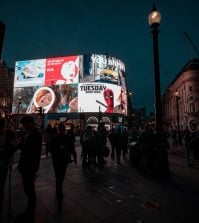Spain gathers anonymised phone tracking data to shape public services

The Spanish Institute of Statistics (INE) is using location data from millions of mobile phones to gain insights into citizens’ movements. The aim is to enable government to better manage public services such as transportation and healthcare, and to improve infrastructure.
To access the data, the INE reached an agreement with the three largest phone operators in Spain: Movistar, Vodafone and Orange. Since the summer, the companies have provided the INE with positioning data from more than 40m mobile devices on eight pre-agreed days.
The data is taken at various times of the day and night, helping researchers to identify citizens’ mobility patterns, and on days that enable statisticians to understand the differences in how people travel on a normal working day compared with how and where they travel during a national holiday, El País reported.
According to multiple local news sources, prior to this latest project, the Netherlands was the only country to have used big data from smartphones for a government statistical project – and that was on a much smaller scale.
Previous studies on mobility in Spain have been based on telephone surveys. According to the INE, it will pay the mobile phone operators a total of €500,000 (US$559,000), compared with the “several million” euros that telephone surveys cost.
Privacy concerns
However, while the new project is both cheaper and faster than other methodologies, the use of information extracted from mobile phones and the transfer of a large private database to a government entity has raised privacy concerns.
The move has provoked a public debate and led some experts to voice doubts about whether the study complies with current privacy legislation, particularly because mobile phone users have not given consent for their data to be used by government.
The INE has said that under no circumstances will operators “provide individual data on telephone numbers, nor on the owners of the lines”. The institute has obtained only aggregated and anonymous data on the number of phones in a given area at a specific time of day, and never the location of a specific device, it said.
INE sources told Global Government Forum that the data collected in the study will be incorporated into the demographic census that the statistical institute conducts every ten years. The census is used by public administrations, especially at local and regional level, to execute new policies and to modify others that are not working. The next INE census is scheduled to be published in 2021.






















Don’t people realize this is big government spying on you? Health care??? Really?! When will the news report the truth for a change???
If you are worried about being spied on switch off your location detection – you can choose to to use that feature or not!! If you are really paranoid don’t get a mobile phone!! Here we use real-time mobile phone movements to monitor traffic movements. The data is anonymous and shows up as a colored dot. When the dots ‘bunch up’ we know there is a problem on the network either an ongoing issue we can resolve or there is an accident on a network where we can direct resources. This information is used to improve peoples ability to travel and shows us problem areas on a network.